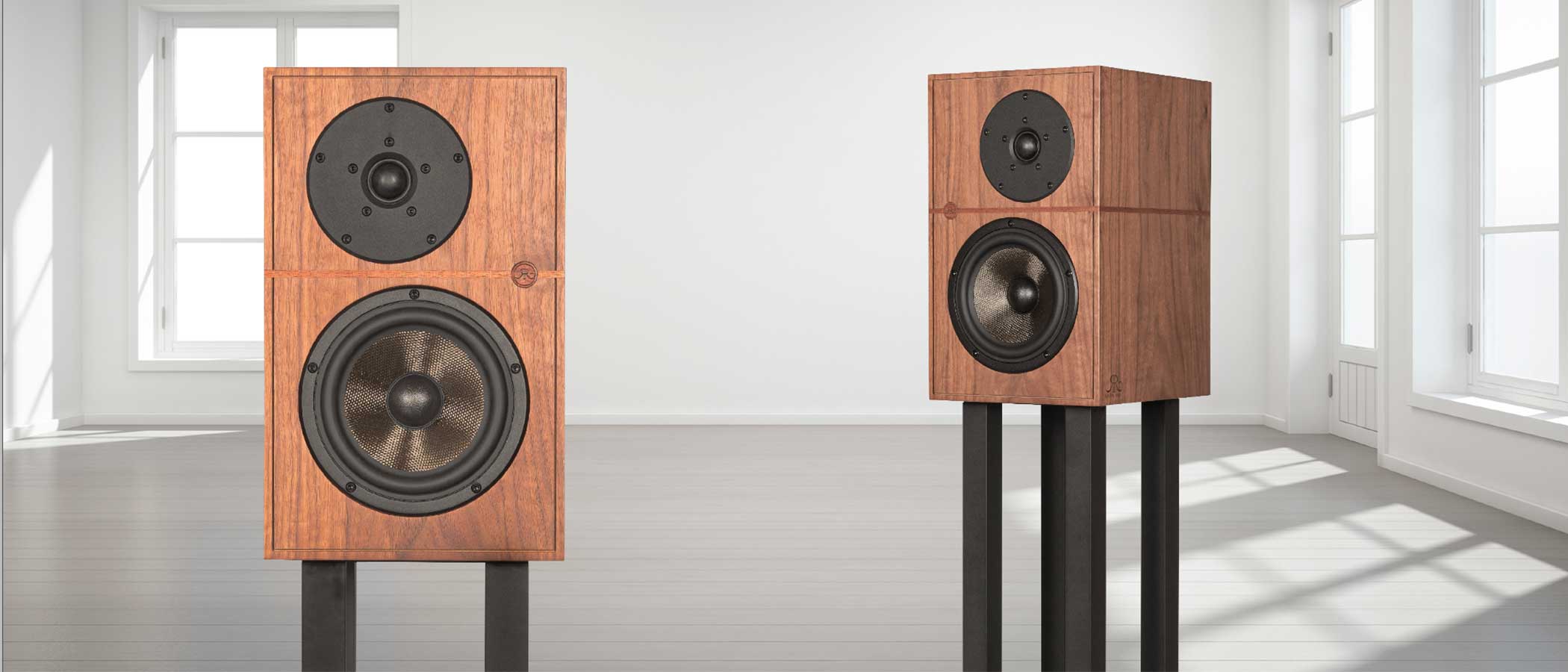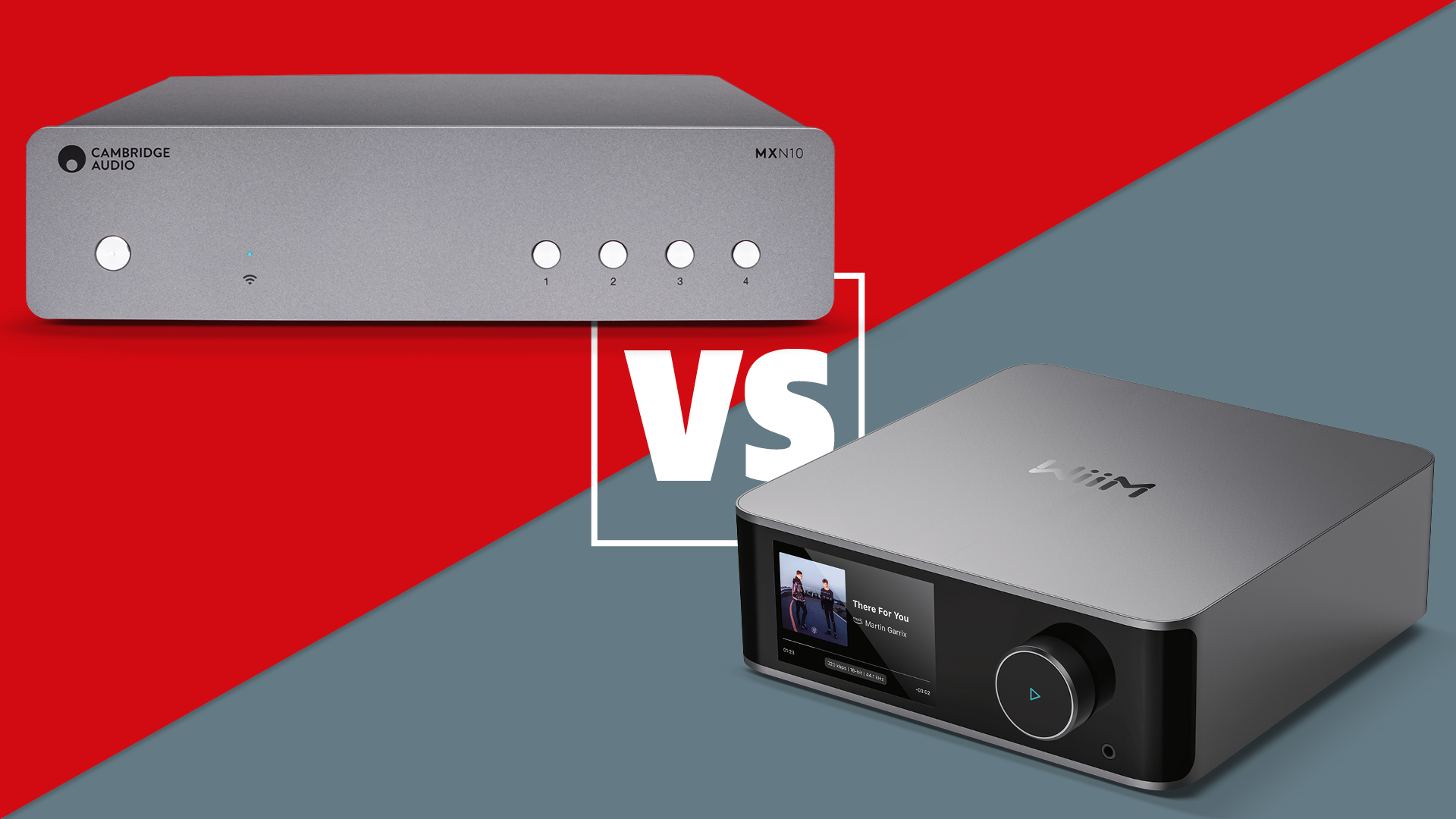Sound+Image Verdict
The Atalante 3 makes good on the French company’s claims of hi-fi engineering expertise, the benefits of controlling every element of the design, the sheer solidity of sound that quality cabinetry and innovative driver design can deliver.
Pros
- +
Astounding soundstaging
- +
Great all-rounders
- +
Lovely finish & details
Cons
- -
Grilles not so pretty
- -
No biwiring option
Why you can trust What Hi-Fi?

This review originally appeared in Sound+Image magazine, Australian sister publication to What Hi-Fi?. Click here for more information on Sound+Image, including digital editions and details on how you can subscribe.
Anyone launching a new speaker brand faces a Herculean task of differentiation. With so many loudspeakers in the world of every shape and size, using materials traditional and exotic, how can a newbie make a dent in such a densely-populated market?
Enter Revival Audio, from France, though very close to the German and Swiss borders in picturesque Mulhouse, Alsace (shown in the image below). Revival is an entirely new operation, but has been co-founded by a pair of industry stalwarts who have significant experience, what they call “nearly four decades of ‘savoir-faire’ behind many well-known flagship models among top tier brands”.
Revival has now released its first two loudspeaker models, both fully designed, engineered and assembled in France using all ‘in-house manufactured’ components, the company declaring firmly that “We do not buy off the shelves!”
And both feature new technologies which go a long way to explaining the company’s belief that it can find a place among so many global seeker brands. We are listening here to the smaller (though hardly petite) of the two models, the Atalante 3.
So what’s the story, and how’s the sound?
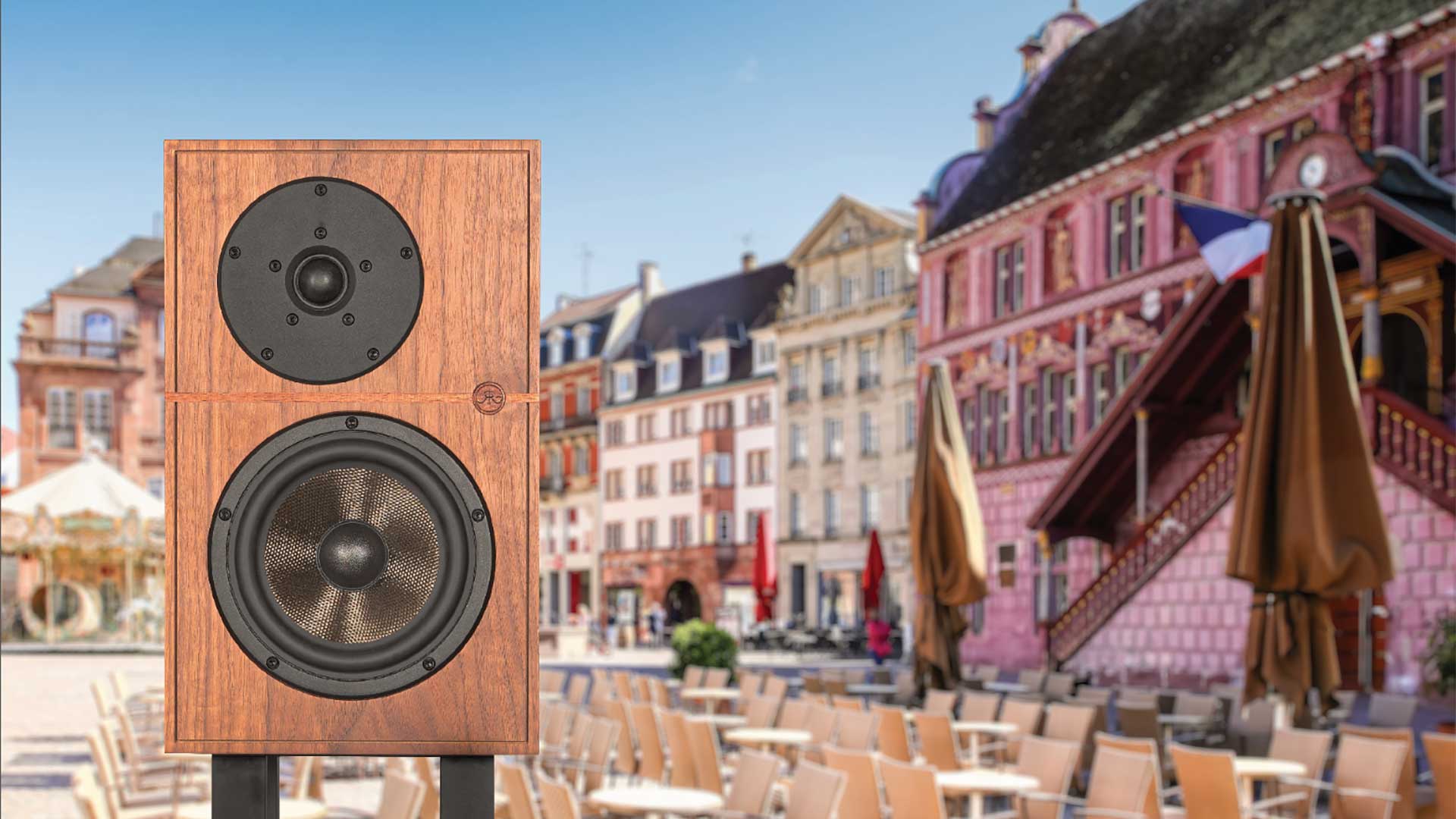
Speakers from spam
The French speakers are being brought to Australia by Audio Marketing in Sydney, and we asked the company’s Tim Wallis what persuaded them to take on a new and as-yet-unknown speaker brand.
“Brave?”, we suggested. Tim laughed.
“One of the things that appealed is that this is such a small, focused offering,” he told us. “That’s refreshing, given some of the trends at the moment are to offer so many skews and so many colours and so many prices.
“So that was one of the attractions. And we found them originally almost by luck – an email that went into ‘Spam’, and thankfully we actually looked at. They offered to send us an info pack, and I was very impressed, so I said let’s have a listen. When they sent us a pair, they did take a lot of hours to calm down, but we had them probably no more than five days and we were convinced. So we said, look, if it’s still open, we’ll take the agency.”
[UPDATE JUNE 2024: Revival Audio has recently ditched Audio Marketing as their distributor, moving to Jay Vee Technologies in Melbourne. Given the judgement of Audio Marketing in initially discovering the brand and then their efforts in introducing it to Australia, promoting through hi-fi shows and other channels, we'll leave you to decide how that reflects on the brand.]
Revival’s credentials do indeed seem strong, with its co-founder, CTO and design engineer Daniel Emonts having long industry experience including stints with Altec-Lansing, Focal-JMLab and most recently nearly six years at Dynaudio, where he was senior R&D engineer of acoustics.
His Revival co-founder Jacky Lee was also resident at Dynaudio, ultimately as Chief Commercial Officer, having previously worked with IBM in his home country Taiwan before leading the business establishment of Dynaudio China from 2016, after Chinese company GoerTek acquired majority shares in Dynaudio in 2014. So that would seem to give the new Alsace-based company a solid grounding in both the engineering and the business nous to achieve commercialisation.
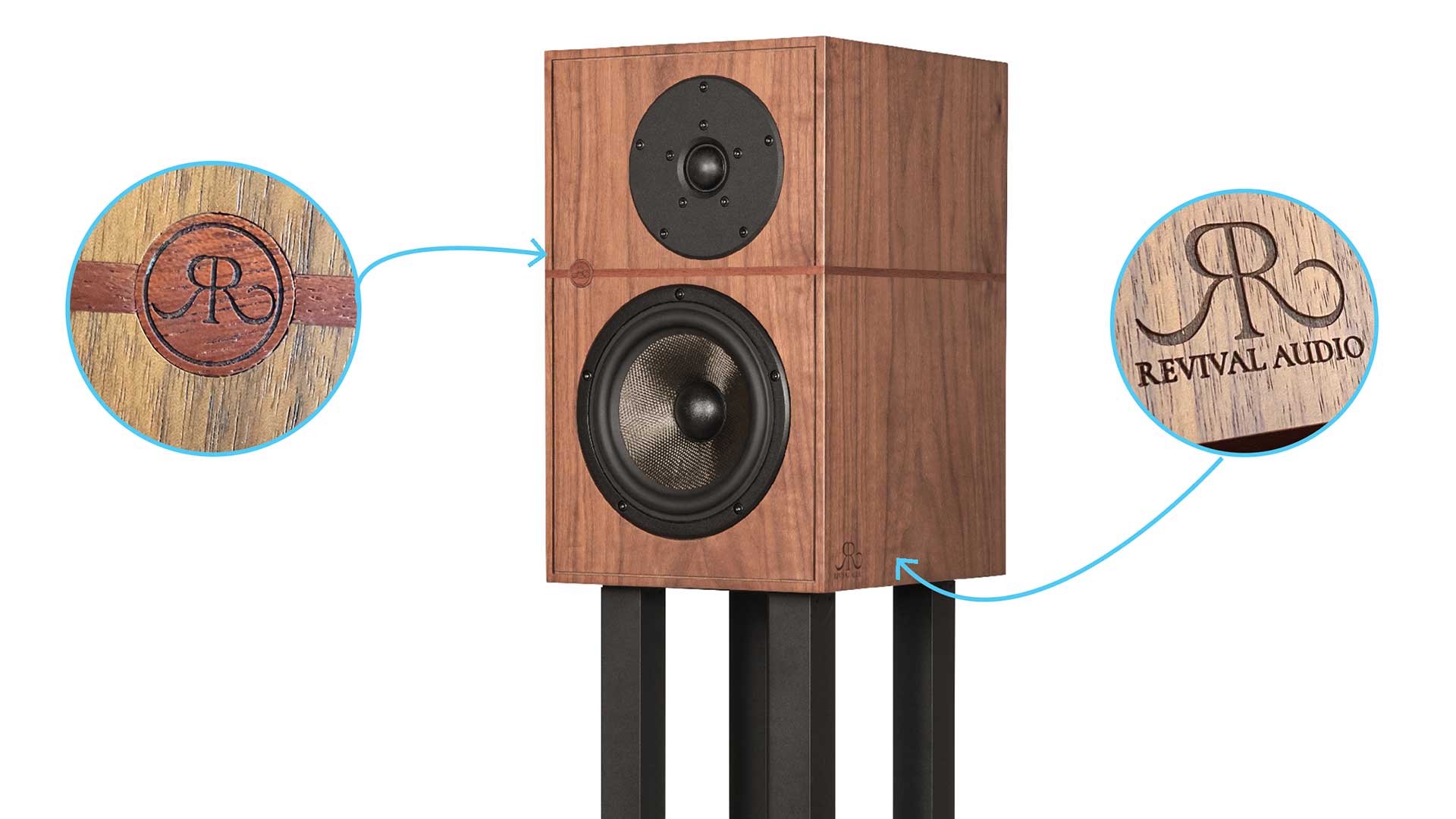
Cabinets & build
Revival big-notes its aesthetics, noting that “Sound is an Art, on top of its science nature”, and that a Revival Audio product equals “an Art Piece of Sound”, though with “no gaudy design to stack up the price...”
And to this end they have collaborated on design with the award-winning A+A Cooren Design Studio based in Paris.
It’s certainly pleasing that Revival has not (yet) felt forced to follow the common trend towards décor-friendly slim towers. The more classic dimensions here certainly fit the 'revival' tag, and indeed we significantly underestimated the size of the Atalante 3 standmounter from the initial pictures we had seen.
As for the larger Atalante 5 (around £3878 / $4445 / AU$8000), you can judge the size from the one behind the company founders in the picture below. Bear in mind that its bass driver is a chunky 12-incher (there's also a dedicated midrange), and with plenty of space around it on the baffle.
The Atalante 3 has a seven-inch woofer, and is a still substantial 38cm high, 24cm wide.
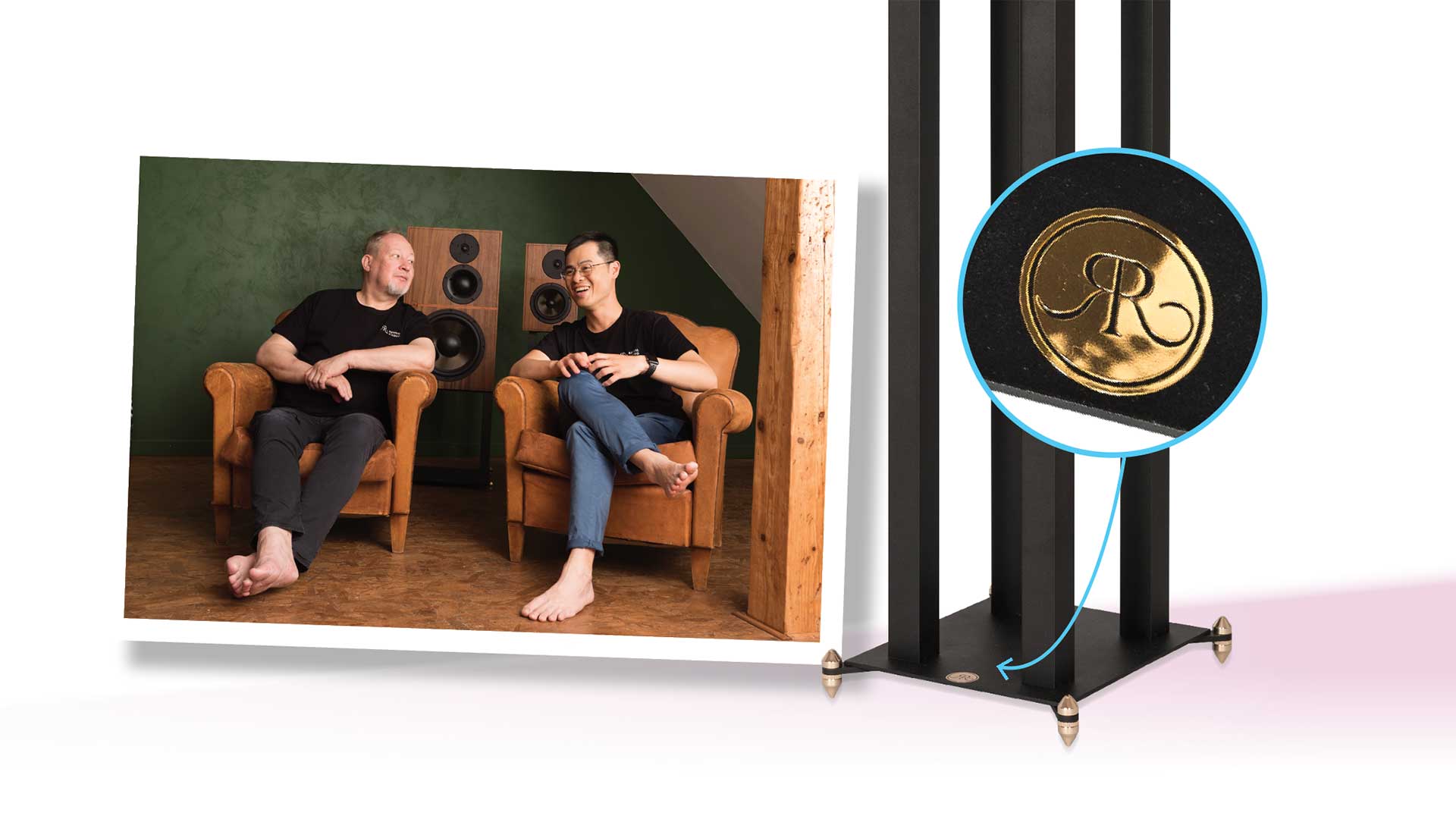
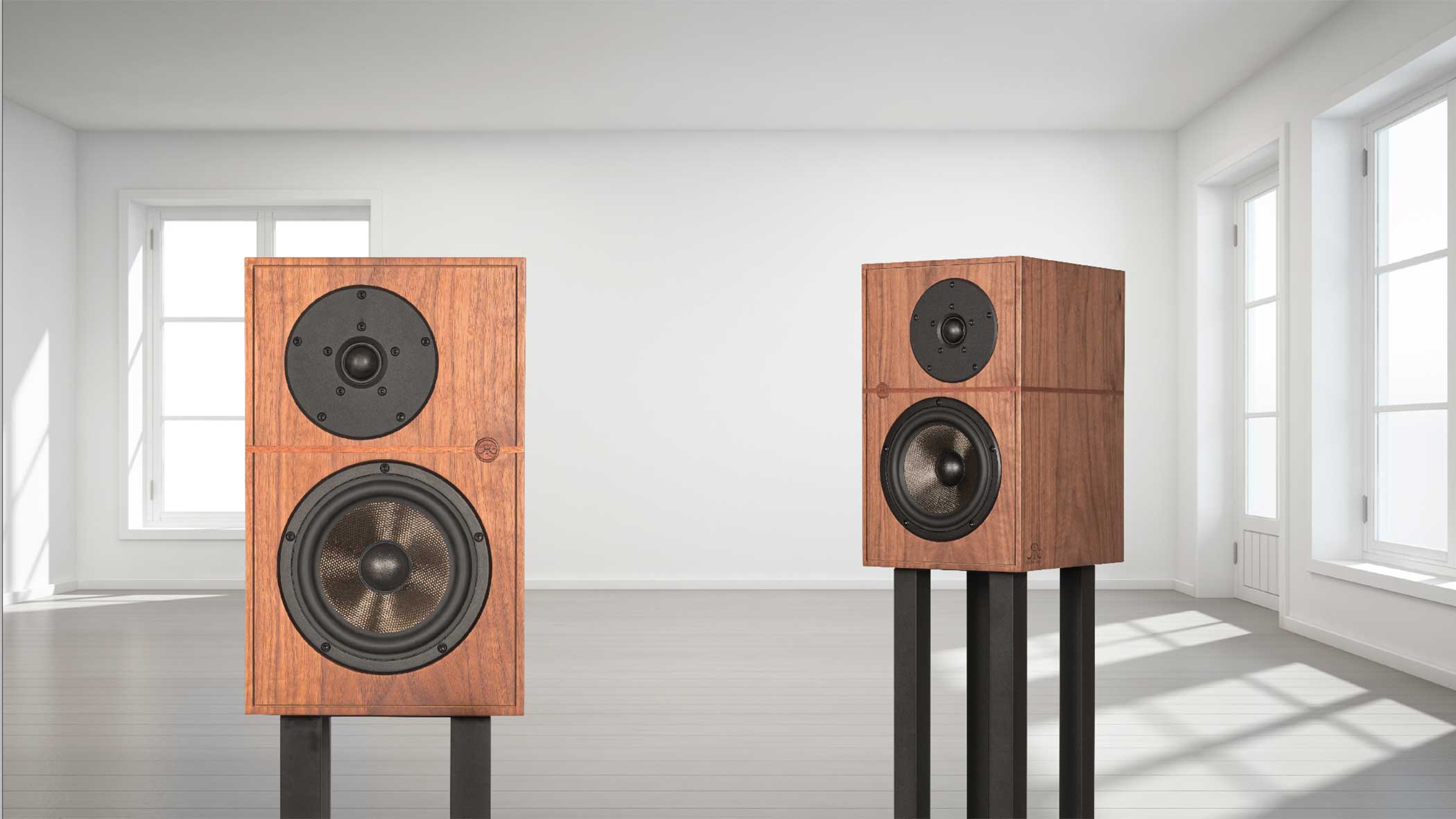
Type: 2-way bookshelf loudspeaker
Drivers: 28mm soft-dome tweeter, 180mm (7-inch) basalt sandwich woofer
Quoted frequency response: 44Hz–22kHz -3dB
Sensitivity: 87dB/2.83V/1 metre
Impedance: 6 ohms nominal (min. 4.4 ohms at 175Hz)
Crossover: 2.8kHz
Dimensions (hwd): 39 x 24 x 27cm
Weight: 11kg
The cabinets are beautiful: a rich dark and tactile hand-picked walnut veneer, split just above the midpoint by a lovely line of inlay right around the speaker, meeting on the front baffle with a little laser-etched rosette with the double-R Revival logo. The company calls this effect a “belt & knot design”, making us wonder how they tie their belts over there.
The tweeters of each speaker are offset, as opposed to vertically aligned with the woofer, so that the two speakers are non-identical: they are reflections of each other – what used to be known as ‘mirror image’ speakers, much more common in the 1970s and ’80s than today. Such speakers naturally create a positioning quandary. Do you set them up with the tweeters on the outside or the inside of the speaker?
Back in the day, the idea was also that in small rooms the tweeters could go outside, and in larger rooms on the inside. In a medium room, putting them ‘inside’ would deliver slightly more of the tweeter output to the listening position and thereby enable a strong soundstage, though a narrower one than would be heard with the tweeters outward and so more separated. And if on the outside, the offset tweeters should also deflect the sonic axis, the equivalent of toeing in without actually shifting the speakers off-axis, which can bring a soundstage into focus while keeping things neat aesthetically.
With many such speakers it comes down to preference. But there is no such debate here, because the backs of the two Atalante 3 speakers are clearly marked either ‘L’ or ‘R’.
[If Revival Audio had left these labels in French, left would be ‘G’ for gauche, and right ‘D’ for droit. But these things may be best left in English for the sake of universality. In the old days, French taps marked ‘C’ would pour unexpectedly piping hot (chaud) water on unsuspecting tourists, much to the amusement of the locals.]
We realised there’s another reason to follow Revival’s preferred positioning – this orientation keeps a second piece of branding visible on the outer sides of each speaker. We like the way this second logo and the words ‘Revival Audio’ are etched into the side of the cabinet itself; in some pictures this can look rather like branding on a steer, but up close it’s more workmanship than stockmanship.
So we suggest you do as they bid, as did we, putting the tweeters to the outsides.
And surely grilles off. The two-part magnetic grilles clamp on and pull off the front of the Atalante 3 easily enough, and these blocks of stretched grey fabric (see a few images down) may just look on trend in a home of distressed concrete, but they almost entirely hide that fine veneer, and that ‘belt-and-knot’ inlay.
Having said that, with their grilles off there is a slight blockiness to the overall proportions, so that their individual asymmetry and their rear corners sometimes seemed to slip away in perspective as we moved around the room, while the deeply-dished woofers followed our movement with exotropian eyes.
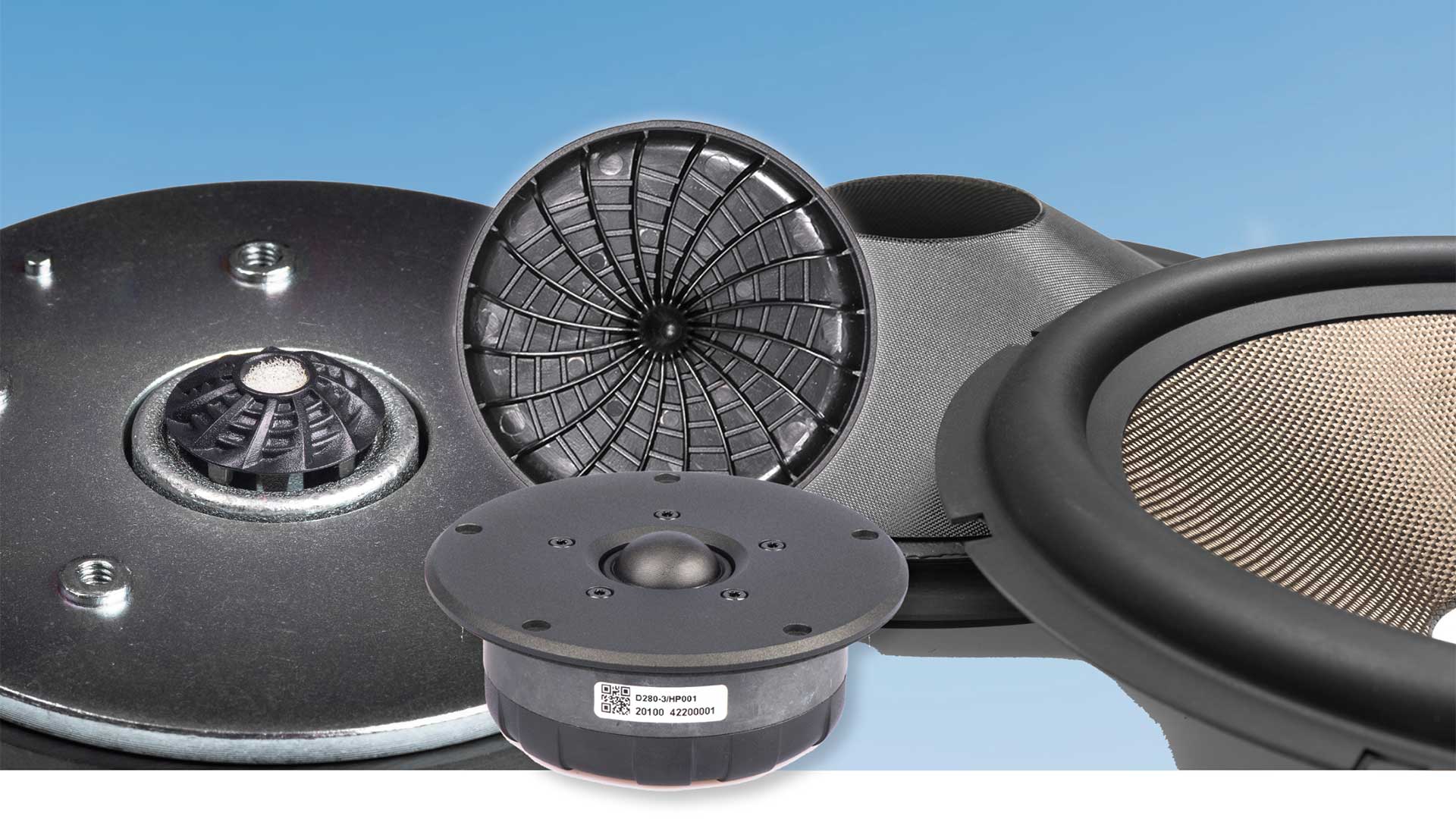
Driver technology
While they have chosen to make speakers that visually hark back to a classic hi-fi age – the company is called ‘Revival’ after all – the driver technology within those solid wooden cabinets is thoroughly modern, and as noted, all Revival’s own work.
The woofers use new materials, notably basalt, extracted from grey igneous lava stone, and touted as being sustainable, recyclable and not, like many cone materials, derived from petroleum products. The cone construction is a sandwich with basalt-fibre fabric as the top layer, a polymer glue and a felt in the middle, and a specially customised foam-based cone as the bottom layer. This has been labelled as BSC (Basalt Sandwich Construction).
Both speaker models share the company’s ‘RASC’ 28mm soft-dome tweeter, which has an asymmetrical dome suspension and a large ferrite magnet which promises to achieve neodymium levels of control without the cost (and using a more eco-friendly material).
The tweeter also features an interesting back-chamber damping system which seems not entirely disassociated with the ideas behind KEF’s MAT tweeter damping, using a circle of structured rigid plastic (pictured above, top centre) featuring angled and asymmetric ridges designed to absorb resonances and damp back-chamber energy. The label ‘RASC’, which is also applied to the midrange of the larger Atalante, refers to the coating used on the domes, which Revival says took “hundreds of hours of experiment... and brings perfect break-up control and the most accurate, smooth sound reproduction.”
Behind the dome is what Revival calls an Anti Resonance Inner Dome, or ‘ARID’ (above, left) which the company claims as being the “critical component elevating the performance of our tweeters and midrange drivers from outstanding to extraordinary”. This is another rigid piece of shaped plastic where the swirling surface has been CAD-designed both to avoid resonances and to guide the waves behind the ARI, where they are absorbed in the back cavity.
The tweeter unit in situ is quoted out to 22kHz at -3dB, and with the mid-bass driver in the Atalante 3 pushing down to 44Hz.
The rear connections use a single set of binding posts, so no biwiring or amping is possible, leaving Revival’s crossovers to do the deed: “Our philosophy of crossover design is, that… we don’t have a philosophy,” says the company. “We use as few components as possible, but all that are needed.”
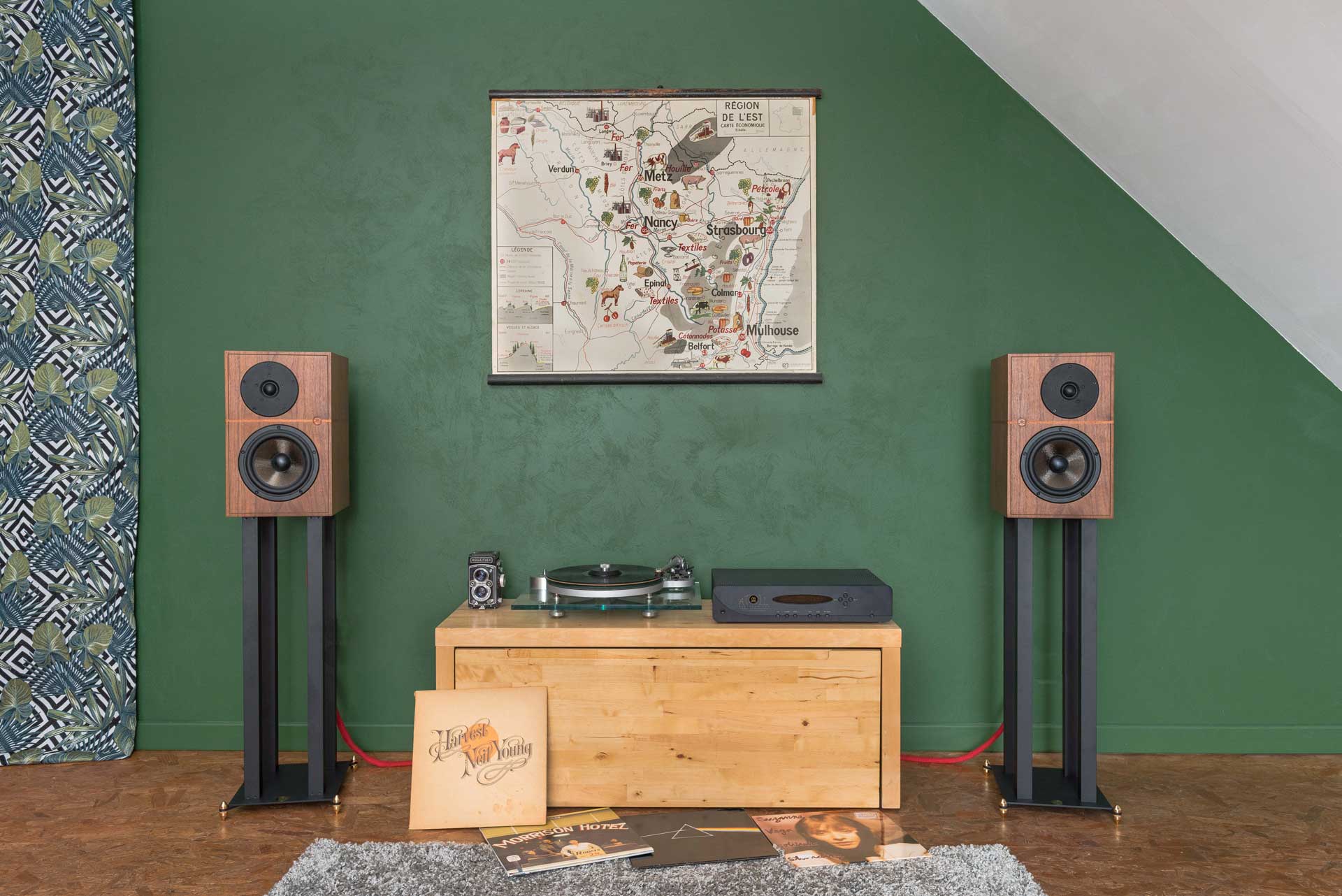
Listening sessions
The supplied rear port bungs are also grey foam, but it took only little time to confirm that we liked the Atalante 3’s bass performance sans bonde. We settled on having them some 40cm out into the room on solid stands; Revival offers its own for each model of Atalante, both priced at €399 (around £344 / $395 / AU$750), and very solidly built in iron, with impressive golden outriggers taking spikes or rubber.
And the Atalante 3’s sonic merits were clear from the off. We were only warming them up, running a smart playlist of lossless Apple Musics (and damn, those smart Apple playlists are so on the money we suspect they’ve been in the house going through our singles collection). Paul Simon’s Kodachrome leapt from the speakers with a verve we had not expected. The soundstaging was simply extraordinary – wide, lively and shimmering – while in the lower frequencies the bass guitar of David Hood with the Muscle Shoals rhythm section was dancing from the top to the bottom of his range without any low-end curtailment whatsoever.
The playlist played on. Dylan’s Jokerman was a revelation in how the Revival speakers were able to deliver a cinematic visibility to the acoustic around Dylan’s vocal; he sounded as if crooning in a stage spotlight as we listened from front-row balcony seats.
Again the bass held rock solid, locking Sly and Robbie’s rhythm section together as it octaved up and down through the verses, with oceans of space in the soundstage for the guitar and organ to swirl and intertwine.
What magic is this! Hold our calls!
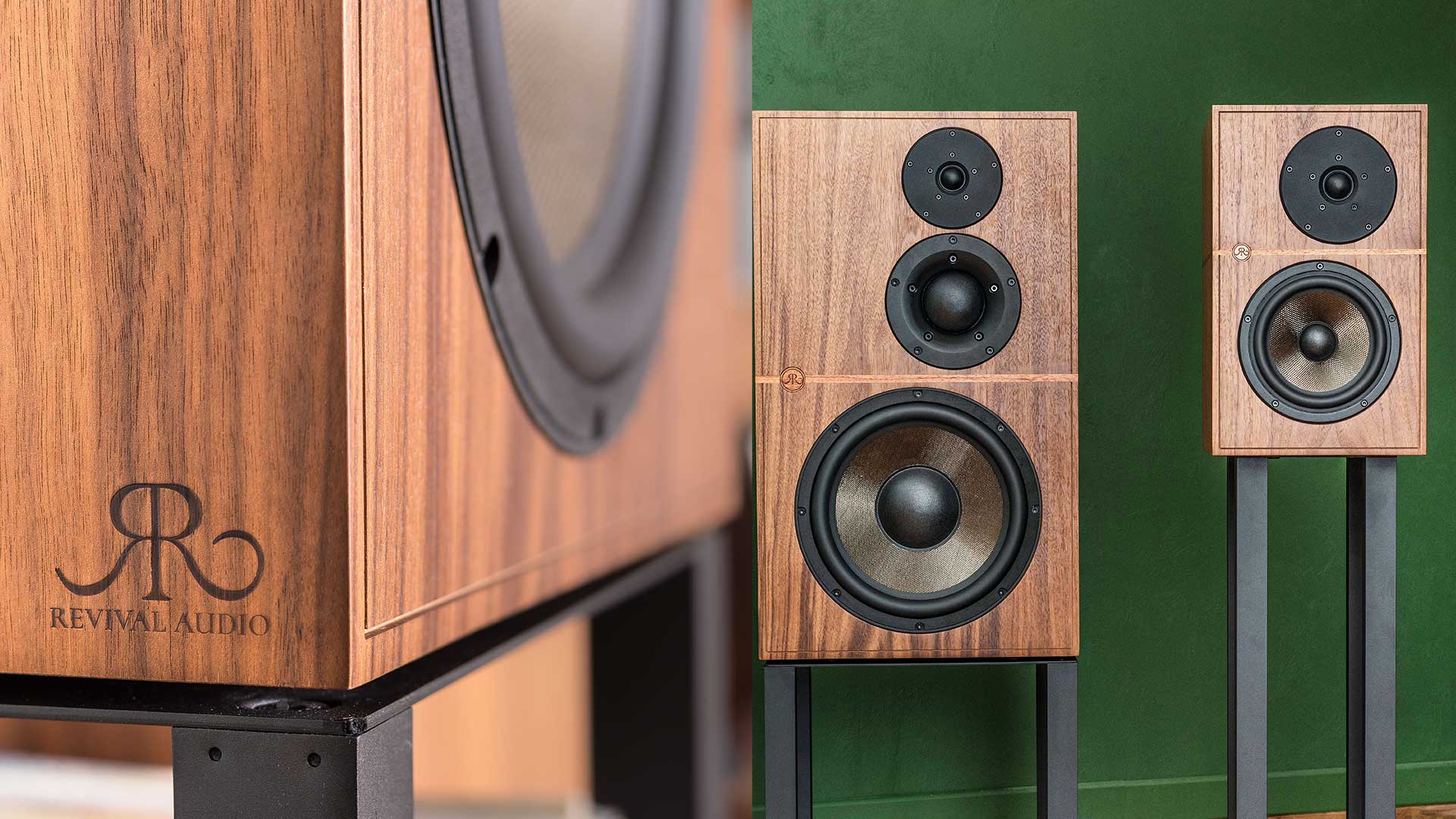
The sound really did bewitch us. As we searched for a word to describe this slightly heightened sense of reality, we settled on ‘presence’ – by which we don’t mean a crude boosting of treble frequencies like the old hi-fi knobs of long ago, but rather a physical presence spread wide and forward in that brilliant soundstage.
It drew us in to nearly everything we played. How jangly and zingy was The Who’s Squeeze Box; how in-your-face Doug Boyle’s guitar fronting Robert Plant’s Liars Dance; how startlingly real the roll of toms from right to left late into Queen’s classic Spread Your Wings.
The bass on Tom Petty’s Running Down A Dream was solid and pumping, with Petty brilliantly clear and isolated in the middle. But the Atalante 3 didn’t necessarily fill out leaner material – they weren’t about to invent bass that wasn’t there. Thin-sounding files came through with the same trademark hyper-soundstaging, but no attempt to thicken things artificially; there’s no crowd-pleasing bump in the upper bass here.
That ability to highlight mix elements while retaining a truth of tone made the Atalante 3s a riveting listen with something impeccably recorded, like an Alan Parsons album. The song Silence and I may be a little reserved and English in its production at first, but as the orchestra warmed up a couple of minutes in, the soundstage expanded in both width and depth as heavily reverbed horns handed over to dancing woodwind and rippling marimba, before dropping down to Eric Woolfson’s almost apologetically winsome vocal, and back up to the finale. If not truly massive, given the limitations of a seven-inch woofer, it was a perfect presentation at, say, two-thirds scale, that made us itch to hear the Atalante 5s with their 12-inchers!
Yet even these smaller Atalantes could sound massive. We span some vinyl Pink Floyd (well, Roger really), playing Two Suns in the Sunset at the end of ‘The Final Cut’, complete with Holophonics car effects from Zuccarelli Labs going from front right to supposed rear right, and this felt a fully weighted delivery. The thud of the kick drum was big but tight, a perfect kick, and the bass amazingly full for standmount sound, not dropping strength until the very bottom E, and then only a tad.
The Atalante 3’s gorgeous delivery of acoustic recordings had us itching to try bigger bands. We loaded an SACD of Nat King Cole (a fine Tivoli Audio disc called ‘The King of Sound’) and heard the years drop away as the durrie-smoking crooner was welcomed into our room, his vocal rounded, rich, and lifted forward of the soundstage as the strings of Nature Boy swirled around and behind, cleanly etched and edged, full and real in tone, and the piano solo immediately standing out as rather muted in its miking, perhaps even a tad out of tune, unlikely as that seems.
The boppier stuff punched out, highlighting the almost ping-pong mix of Walkin’ My Baby Back Home – horns sharp in the right, clarinets sultry in the left, and when the main break came we were cranking the level until we felt like we were watching the recording through the glass from the box, enjoying full-level studio sound. This was just joyful stuff.
The notion of ‘presence’ again came to the fore with Rudolf Buchbinder’s solo delivery of Beethoven’s Piano Sonata No. 27 (DG, 2021), where the piano is not wide-miked across the soundstage but rather captured central with a stage acoustic, just closely enough to keep a firm attack to notes; indeed we could discern the individual weight of his fingering in slower passages, while the bursts of bounced sound in the stabbing staccato sections served a real close-your-eyes-and-you’re-there experience of the performance.
For greater scale we moved up to one of Beethoven’s piano concertos (no. 3, the minor one, an older Krystian Zimerman returning to the concertos with Simon Rattle and the LSO, recorded during the pandemic). Classical fans will love the Atalantes’ combination of low-level detail when pianissimo, full-scale dynamics when fortissimo. The surprising scale of these standmounts allowed us to raise levels to enjoy full-sized piano, the recording here just a little smeary on rapid runs, but still with a wide and involving soundstage, and only at maximum orchestral complexity and crescendo (6:10 in) did we find a moment where the Atalante 3s began to exhibit any congestion at all.
Before finishing up our weeks with these fine Frenchies, we put them on TV duties either side of a large TV. Their wide-ranging abilities excelled here equally, while that unusual ‘presence’ made for unexpected head-raising moments to appreciate, say, the resolution and immersion of applause from the studio audience on 8 out of 10 Cats Prefer Countdown, or the moments of heart-stopping drama underpinned by ominous soundtrack depth on The Curse of Oak Island. The speakers proved here their ability to play quiet while still presenting a full image. This treatment kept Oak Island exciting even when played relatively quietly because all the doors and windows were open on a sunny Saturday morning.
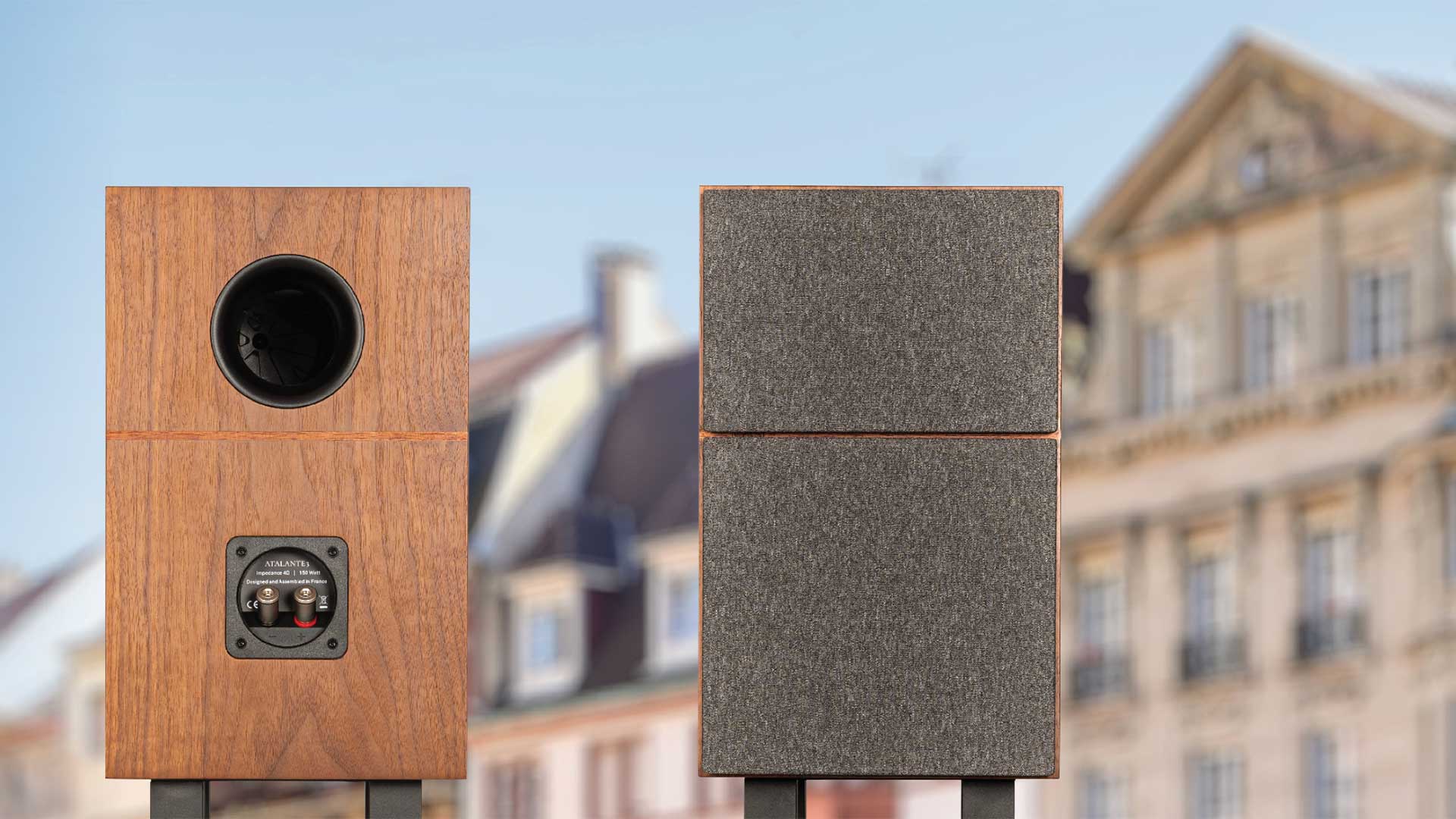
Verdict
The tunes kept thrilling us from the Atalante 3s even as we were getting the packaging ready to receive their load for return. US3’s glorious Lazy Day came up on rotation, the Atalante 3s fully gripping its unusual combination of bass qualities – there’s a drone, something almost subterranean, and an extra kick drum putting some super deep thud over the first sax solo – while the ‘heya’ calls inhabited their own perfectly formed acoustic region at 10am on the dial.
Darn these Atalante 3s: they were showing us things our usual reference speakers don’t do.
Only reluctantly did we pack them back up. What a debut performance to deliver! The Atalante 3 makes good on the French company’s claims of hi-fi engineering expertise, the benefits of controlling every element of the design, the sheer solidity of sound that quality cabinetry and innovative driver design can deliver.
So is there room in the market for a new loudspeaker brand? When it arrives with a derrière-kicking debut performance like this, we can only say ‘Mais bien sûr!’

Jez is the Editor of Sound+Image magazine, having inhabited that role since 2006, more or less a lustrum after departing his UK homeland to adopt an additional nationality under the more favourable climes and skies of Australia. Prior to his desertion he was Editor of the UK's Stuff magazine, and before that Editor of What Hi-Fi? magazine, and before that of the erstwhile Audiophile magazine and of Electronics Today International. He makes music as well as enjoying it, is alarmingly wedded to the notion that Led Zeppelin remains the highest point of rock'n'roll yet attained, though remains willing to assess modern pretenders. He lives in a modest shack on Sydney's Northern Beaches with his Canadian wife Deanna, a rescue greyhound called Jewels, and an assortment of changing wildlife under care. If you're seeking his articles by clicking this profile, you'll see far more of them by switching to the Australian version of WHF.
